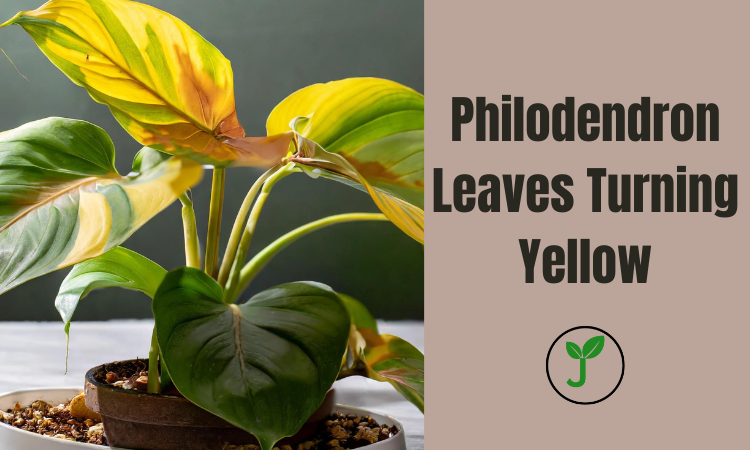Philodendrons are a favorite among plant enthusiasts, especially in the United States. However, one common issue that many growers face is philodendron leaves turning yellow. If you’re experiencing this, don’t worry. In this guide, I’ll share my decade-long experience in growing various philodendron species and help you understand why this happens and how to remedy it. Plus, check out our range of plant care products at RealJef to keep your philodendrons thriving!
Why Do Philodendron Leaves Turn Yellow?
Understanding the reasons behind yellowing leaves is the first step to ensuring your philodendron stays healthy. Here are some common causes:
Overwatering and Root Rot
Overwatering is a leading cause of yellow leaves in philodendrons. When the soil is too wet, the roots can’t breathe, leading to root rot.
Underwatering
Conversely, underwatering can also cause yellow leaves. If the plant doesn’t get enough water, it can’t transport nutrients effectively.
Poor Drainage
Without proper drainage, water can accumulate at the bottom of the pot, causing similar issues to overwatering.
Nutrient Deficiency
A lack of essential nutrients, particularly nitrogen, can lead to yellowing leaves.
Light Issues
Philodendrons prefer bright, indirect light. Too much direct sunlight or too little light can cause the leaves to turn yellow.
Pests and Diseases
Insects like spider mites and diseases such as fungal infections can cause yellowing leaves.
Natural Aging
It’s normal for older leaves to turn yellow and drop off as part of the plant’s natural life cycle.
How to Fix Yellow Leaves on Philodendrons
Proper Watering Techniques
Ensure you water your philodendron correctly. Allow the top inch of soil to dry out before watering again.
Improving Drainage
Use pots with drainage holes and a well-draining soil mix to prevent water from sitting at the roots.
Nutrient Management
Fertilize your philodendron with a balanced, water-soluble fertilizer every month during the growing season.
Light Adjustment
Place your philodendron in a spot with bright, indirect light. Avoid direct sunlight which can scorch the leaves.
Pest Control
Regularly check for pests and treat infestations promptly with insecticidal soap or neem oil.
Pruning and Care
Prune yellow leaves to allow the plant to focus its energy on new growth.
Repotting When Necessary
Repot your plant every 1-2 years to refresh the soil and give the roots more space to grow.
Detailed Plant Care Guide for Philodendrons

| Aspect | Care Tips |
|---|---|
| Watering | Water when the top inch of soil is dry. Ensure proper drainage. |
| Light | Bright, indirect light is ideal. Avoid direct sunlight. |
| Temperature | Maintain a temperature range of 65-80°F. Protect from drafts and cold. |
| Humidity | High humidity is preferred. Use a humidifier or mist the leaves regularly. |
| Soil | Use a well-draining, peat-based potting mix. |
| Fertilizing | Feed monthly with a balanced fertilizer during the growing season. |
| Pests | Watch for spider mites, aphids, and mealybugs. Treat promptly with appropriate solutions. |
| Pruning | Prune yellowing or dead leaves to encourage new growth. |
| Repotting | Repot every 1-2 years to refresh soil and provide room for growth. |
FAQs
Why are my philodendron leaves turning yellow despite proper care?
Several factors could be at play, including nutrient deficiencies, pest infestations, or environmental stress. Evaluate all aspects of care to pinpoint the issue.
How often should I water my philodendron?
Water your philodendron when the top inch of soil feels dry. Overwatering and underwatering both cause yellow leaves.
Can yellow leaves turn green again?
Once a leaf turns yellow, it won’t revert to green. Focus on improving plant care to prevent further yellowing.
What’s the best type of soil for philodendrons?
A well-draining, peat-based potting mix is ideal for philodendrons. Avoid heavy soils that retain too much moisture.
Do philodendrons need direct sunlight?
No, philodendrons thrive in bright, indirect light. Direct sunlight can scorch their leaves.
How do I increase humidity for my philodendron?
Increase humidity by using a humidifier, placing a tray of water near the plant, or misting the leaves regularly.
Conclusion
Yellow leaves on your philodendron can be a sign of various issues, from watering problems to nutrient deficiencies. By understanding the causes and implementing proper care techniques, you can keep your philodendron healthy and vibrant. Remember, for all your plant care needs, visit RealJef and explore our range of high-quality products designed to help your plants thrive.
